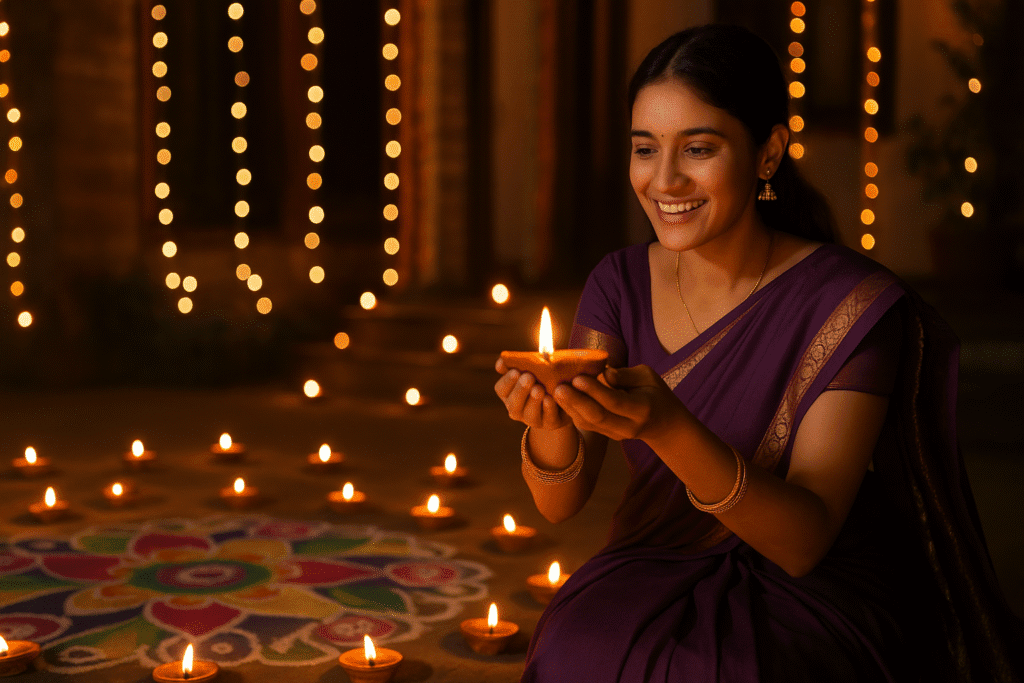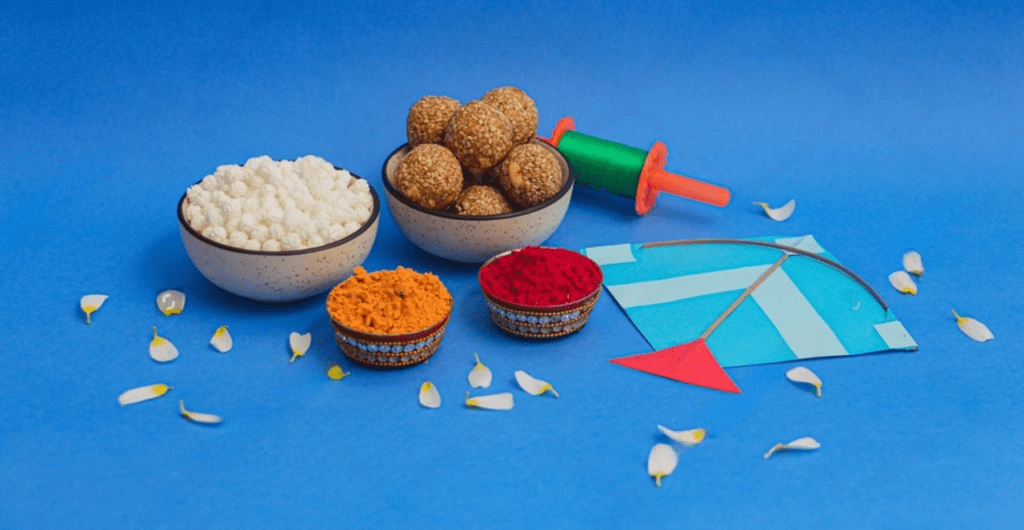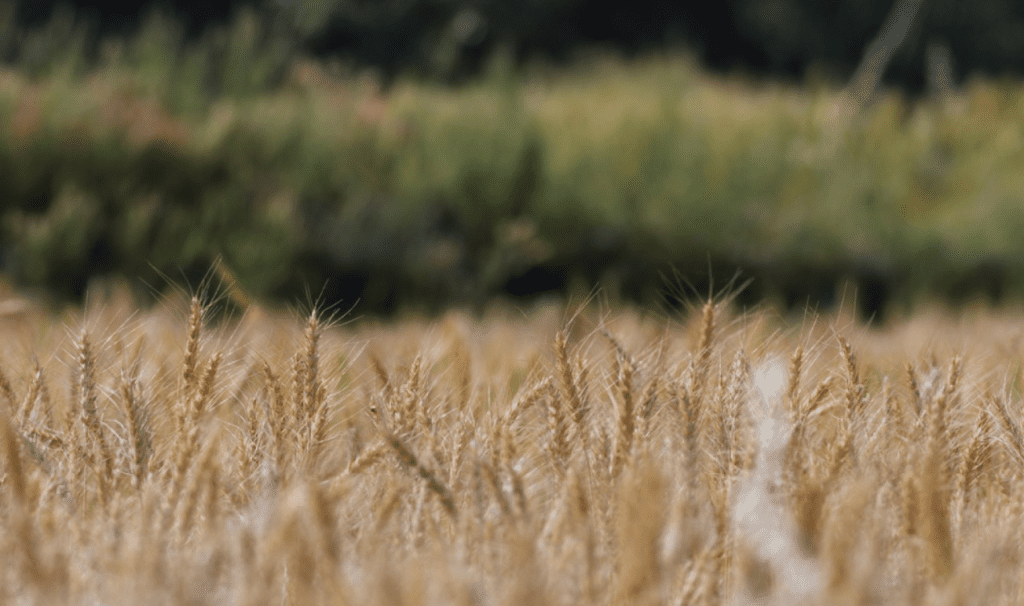Introduction: A Celebration of Radiance and Renewal
Diwali, known as Deepavali or the Festival of Lights, is India’s most cherished and widely celebrated festival, illuminating homes, hearts, and communities with the glow of hope and togetherness. Observed by Hindus, Jains, Sikhs, and Buddhists, Diwali typically falls in October or November, based on the lunar calendar, marking the triumph of light over darkness and good over evil. From the flickering of clay diyas to the burst of fireworks, Diwali is a five-day extravaganza of rituals, feasts, and cultural vibrancy. Rooted in ancient traditions and diverse mythologies, it transcends religious and regional boundaries, uniting millions across India and the global diaspora. This article delves into the historical significance, rituals, culinary delights, and modern evolution of Diwali, capturing its timeless magic.
Historical and Spiritual Significance
Mythological Roots: Triumph of Good
Diwali’s origins are steeped in Hindu epics, with the most prominent legend tied to the Ramayana. The festival celebrates Lord Rama’s return to Ayodhya after 14 years of exile and his victory over the demon king Ravana, symbolizing the triumph of righteousness. In South India, Diwali honors Lord Krishna’s defeat of the demon Narakasura, while Jains commemorate Lord Mahavira’s attainment of nirvana. For Sikhs, Diwali marks the release of Guru Hargobind Ji from Mughal captivity, signifying freedom and justice. These diverse narratives converge on a universal theme: the victory of light, knowledge, and virtue over darkness and ignorance.
A Celestial Alignment
Diwali coincides with the new moon (Amavasya) of the Hindu month of Kartik, a time when the night sky is at its darkest, making the glow of lamps profoundly symbolic. Ancient texts like the Skanda Purana emphasize the worship of Goddess Lakshmi, the deity of wealth, and Lord Ganesha, the remover of obstacles, during Diwali. The festival’s celestial and spiritual alignment fosters a sense of renewal, encouraging devotees to cleanse their homes, minds, and hearts for a prosperous year ahead.
The Five Days of Diwali: A Journey of Joy
Day 1: Dhanteras – The Dawn of Prosperity
Diwali begins with Dhanteras, the day dedicated to wealth and health. Devotees worship Goddess Lakshmi and Lord Dhanvantari, the god of Ayurveda, praying for abundance and well-being. Homes are cleaned, and new purchases—gold, silver, utensils, or appliances—are made, as buying metal is considered auspicious. The lighting of a single diya at the doorstep marks the start of festivities, inviting prosperity. In 2024, Dhanteras was celebrated on October 29, with markets buzzing with shoppers seeking “Dhan” (wealth).
Day 2: Naraka Chaturdasi – The Cleansing Ritual
The second day, known as Naraka Chaturdasi or Choti Diwali, commemorates Krishna’s victory over Narakasura. Devotees rise before dawn for an oil bath, symbolizing spiritual purification. Homes are adorned with rangoli (colorful patterns) and lit with diyas to ward off evil. In some regions, like Maharashtra, effigies of Narakasura are burned, echoing the triumph of good. This day, observed on October 30, 2024, sets a reflective tone, blending cleansing rituals with festive preparations.
Day 3: Diwali – The Night of Lights
The third day, the main Diwali night (October 31, 2024), is the festival’s crescendo. Families gather to perform Lakshmi-Ganesha puja, offering sweets, flowers, and coins to invite wealth and wisdom. Homes glow with rows of clay diyas, fairy lights, and lanterns, while fireworks illuminate the sky, symbolizing the banishment of darkness. The exchange of gifts—sweets, dry fruits, and clothes—strengthens bonds, and card games add playful cheer. The night, filled with laughter and light, embodies Diwali’s core message of joy and unity.
Day 4: Annakut – The Feast of Abundance
The fourth day, Annakut or Govardhan Puja, celebrates Lord Krishna’s lifting of the Govardhan Hill to protect villagers from Indra’s wrath. Devotees prepare an array of dishes, known as “Annakut” (mountain of food), offered to Krishna in temples and homes. In North India, this day, observed on November 1, 2024, is also marked as Vishwakarma Day, honoring the divine architect. The sharing of lavish meals reinforces gratitude for nature’s bounty and communal harmony.
Day 5: Bhai Dooj – The Bond of Siblings
Diwali concludes with Bhai Dooj, a heartfelt celebration of sibling love. Sisters apply tilak (vermilion) on their brothers’ foreheads, praying for their long life, while brothers offer gifts in return. Rooted in the legend of Yama and his sister Yamuna, this day, celebrated on November 2, 2024, strengthens familial ties. The ritual, akin to Raksha Bandhan, underscores Diwali’s emphasis on relationships, wrapping the festival in warmth and affection.
Cultural Performances: A Burst of Art and Tradition
Rangoli and Fireworks: Visual Splendor
Diwali transforms India into a canvas of creativity, with intricate rangoli designs adorning doorsteps, made from colored powders, rice, or flowers. These patterns, often featuring lotuses or peacocks, welcome Lakshmi and enhance the festive aesthetic. Fireworks, from sparklers to aerial displays, light up the night, though growing environmental awareness has spurred eco-friendly alternatives like laser shows. In 2024, cities like Delhi promoted green crackers to reduce pollution, balancing tradition with sustainability.
Music, Dance, and Community Events
Diwali sparks cultural vibrancy, with community fairs hosting folk dances like Garba and Dandiya in Gujarat, and classical performances in urban centers. Bollywood Diwali songs, from “Diwali Aayi” to “Happy Diwali,” fill the air, while temples organize bhajans and kirtans. Mela stalls sell handicrafts, diyas, and sweets, fostering local economies. These events, blending tradition with festivity, create a joyous atmosphere, uniting diverse communities in celebration.
Culinary Delights: A Feast of Sweet and Savory
Diwali is a gastronomic delight, with sweets and snacks at its heart. Classics like laddoo, barfi, jalebi, and gulab jamun, made with ghee, sugar, and nuts, symbolize sweetness in life. Savory treats include chakli, sev, and mathri, perfect for festive snacking. Regional specialties shine—Bengali sandesh, Maharashtrian karanji, and South Indian mysore pak add diversity. Families exchange mithai boxes, and home-cooked feasts feature biryani, paneer curries, and puri-sabzi, fostering communal dining. In 2024, artisanal sweets with organic ingredients gained popularity, reflecting modern tastes.
The Setting: India’s Illuminated Landscape
Homes and Streets Aglow
Diwali transforms India’s cities and villages into a sea of lights. Homes are cleaned, whitewashed, and decorated with diyas, torans (door hangings), and fairy lights. Urban centers like Mumbai’s Marine Drive and Delhi’s Chandni Chowk sparkle, while rural hamlets glow with earthen lamps. Temples, such as Varanasi’s Kashi Vishwanath and Amritsar’s Golden Temple, host grand celebrations, drawing devotees. The festival’s visual splendor, set against India’s diverse landscapes, creates an enchanting ambiance.
Accessibility and Global Celebrations
Major Diwali events occur in cities like Delhi, Kolkata, and Bengaluru, with public displays at India Gate and Cubbon Park. For travelers, Delhi’s airports and India’s extensive rail network make access easy. The diaspora celebrates Diwali in London’s Trafalgar Square, New York’s Times Square, and Sydney’s Parramatta, with lamp-lighting and cultural shows. In 2024, over 50 countries hosted Diwali events, showcasing its global footprint.
Modern Evolution: A Festival of Sustainability and Inclusion
Eco-Friendly Diwali
Diwali’s environmental impact, particularly from fireworks, has spurred a shift toward sustainability. In 2024, campaigns like “Green Diwali” promoted diyas over electric lights, plantable crackers, and community clean-ups. Cities like Bengaluru hosted zero-waste Diwali bazaars, selling biodegradable decor. Social media amplified eco-conscious practices, with influencers sharing DIY rangoli and upcycled diya tutorials, ensuring the festival evolves responsibly.
A Global and Inclusive Celebration
Diwali’s universal themes of light and unity resonate worldwide, with non-Hindus joining celebrations in multicultural hubs like Toronto and Dubai. In 2024, the White House Diwali event, attended by Indian-American leaders, highlighted its diplomatic significance. Virtual pujas and online gift exchanges, popularized post-COVID, connect the diaspora, while corporate Diwali parties and school events engage younger generations, ensuring the festival’s relevance in a globalized world.
Diwali in Context: A Universal Festival of Light
Shared Themes Across Cultures
Diwali shares parallels with global light festivals like Hanukkah, Christmas, and Thailand’s Loy Krathong, all celebrating hope and renewal. Its lunar timing and focus on family align with harvest festivals like Pongal and Bihu, yet its pan-Indian and interfaith appeal make it unique. The festival’s adaptability, embracing Jain, Sikh, and Buddhist narratives, underscores its inclusivity, uniting India’s diverse communities.
A Celebration of Resilience
Diwali’s message—light over darkness—resonates in times of adversity. During the 2020 pandemic, virtual Diwali celebrations and balcony diya-lighting fostered hope. The festival’s emphasis on renewal inspires personal growth, encouraging devotees to overcome challenges with optimism. Its blend of spirituality, festivity, and community spirit cements Diwali as a timeless celebration of human resilience.
Conclusion: A Beacon of Light and Love
Diwali is more than a festival; it is India’s radiant heartbeat, illuminating lives with faith, joy, and unity. From the glow of diyas to the sweetness of laddoos, every ritual weaves a story of hope and togetherness. As families gather, fireworks soar, and rangoli bloom, Diwali transcends borders, inviting all to embrace light over darkness. Whether in a bustling Indian city or a quiet diaspora home, the festival’s magic endures, fostering love, generosity, and renewal. As we light a diya this Diwali, let us celebrate the eternal promise of a brighter tomorrow, united in the glow of shared humanity.



